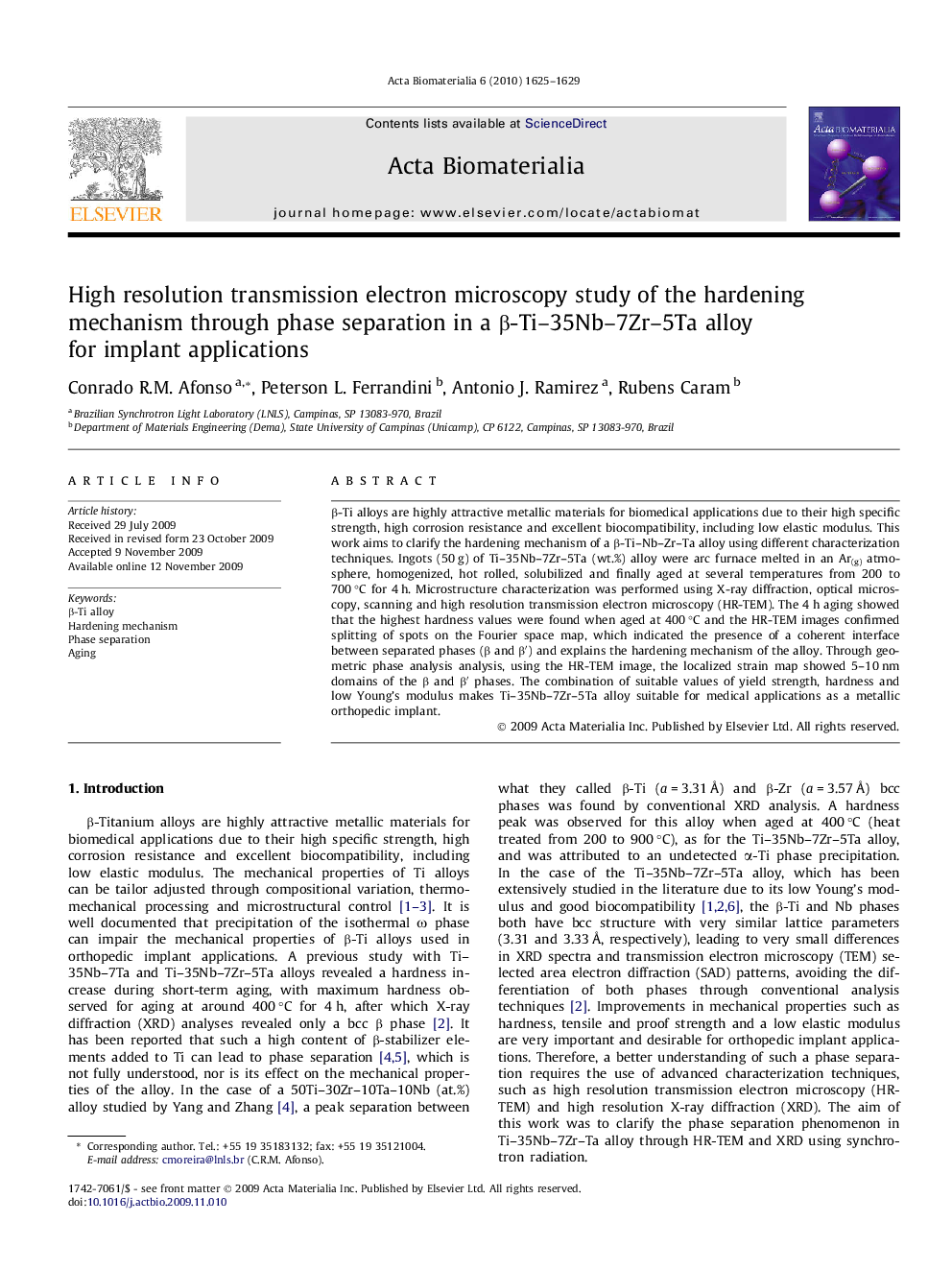| کد مقاله | کد نشریه | سال انتشار | مقاله انگلیسی | نسخه تمام متن |
|---|---|---|---|---|
| 2543 | 114 | 2010 | 5 صفحه PDF | دانلود رایگان |

β-Ti alloys are highly attractive metallic materials for biomedical applications due to their high specific strength, high corrosion resistance and excellent biocompatibility, including low elastic modulus. This work aims to clarify the hardening mechanism of a β-Ti–Nb–Zr–Ta alloy using different characterization techniques. Ingots (50 g) of Ti–35Nb–7Zr–5Ta (wt.%) alloy were arc furnace melted in an Ar(g) atmosphere, homogenized, hot rolled, solubilized and finally aged at several temperatures from 200 to 700 °C for 4 h. Microstructure characterization was performed using X-ray diffraction, optical microscopy, scanning and high resolution transmission electron microscopy (HR-TEM). The 4 h aging showed that the highest hardness values were found when aged at 400 °C and the HR-TEM images confirmed splitting of spots on the Fourier space map, which indicated the presence of a coherent interface between separated phases (β and β′) and explains the hardening mechanism of the alloy. Through geometric phase analysis analysis, using the HR-TEM image, the localized strain map showed 5–10 nm domains of the β and β′ phases. The combination of suitable values of yield strength, hardness and low Young’s modulus makes Ti–35Nb–7Zr–5Ta alloy suitable for medical applications as a metallic orthopedic implant.
Journal: Acta Biomaterialia - Volume 6, Issue 4, April 2010, Pages 1625–1629